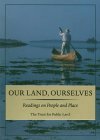 Lea Hong grew up in Wahiawa–her great-grandparents first immigrated to Hawai’i in early 1900s to work for the sugar plantations. Now she’s an attorney at the Trust for Public Land, won a landmark case against UH’s Mauna Kea plans, is on the boards of Historic Hawai’i Foundation and Tau Dance Theater, and is a staunch advocate for the protection of land to perpetuate traditional Hawaiian culture. It might surprise you, then, that she’s reading about old English country life as well as conservation essays.
Lea Hong grew up in Wahiawa–her great-grandparents first immigrated to Hawai’i in early 1900s to work for the sugar plantations. Now she’s an attorney at the Trust for Public Land, won a landmark case against UH’s Mauna Kea plans, is on the boards of Historic Hawai’i Foundation and Tau Dance Theater, and is a staunch advocate for the protection of land to perpetuate traditional Hawaiian culture. It might surprise you, then, that she’s reading about old English country life as well as conservation essays.
What I’m Reading | Lea Hong
Hawaiian Islands Program Director, Trust for Public LandQ&A with Christine Thomas
I normally read a diverse collection of fiction, from classic literature to bestseller beach reads. I used to read a lot of science fiction and fantasy when I was younger. I just finished reading An Assembly Such as This: A Novel of Fitzwilliam Darcy
by Pamela Aidan, a fictional what-if premise of Jane Austen’s Pride and Prejudice about what is Darcy thinking?
Right now I’m reading Our Land, Ourselves: Readings on People and Place, an anthology of conservation writing with excerpts from conservations like Wendell Barry and Aldo Leopold. He wrote A Sand County Almanac, which is kind of like this classic of conservation ethics, and Barry is a well-known conservation writer—an advocate for small family-owned farms and that kind of thing.
The thing that struck me the most was this one sentence our president wrote in the introduction –“The conservation of land is one of the most powerful tools for shaping positive change, because it gives communities hope through self-determination.” In the past year I’ve been here, and with the projects that I’ve been working on, I’ve found that is definitely true. It often is a healing process, it brings all sorts of people together—community folks, landowners, state government, county government, legislators, staff people within the agencies. It’s a very collaborative process in terms of getting the funds together and the hopeful planning that goes on for the future of the land, and taking ownership of the land in an actual title sense and in a metaphorical sense.
–What are these readings meant to accomplish?
It was an attempt to fully examine our values and purpose as a conservation organization, to help itself in the larger conservation movement to more fully understand the core values. I guess there’s a concern that conservation organizations are kind of removed from life, from people, that they’ve concentrated so much on whales and seals and the rainforest in some distant place that people have lost connection to land in their own communities. So it and we are about trying to get people to see the value of land conservation in their own communities.
–Does this inspire you to deepen public commitment to the cultural value of land, and to collaborating on its conservation?
I think that’s the purpose of the book—to remind folks who work for Trust for Public Land or anyone who works in conservation to help inspire us to define our mission, to encourage us to foster better relationships with the natural world. It definitely confirmed for me that everything that I’m doing is already consistent with the mission values of the founders, which is really good. That’s a great feeling. Our president’s quote is very, very true, especially in Hawai`i where land and people are connected. When we talk about land conservation or return of land to people it is and empowering process.

